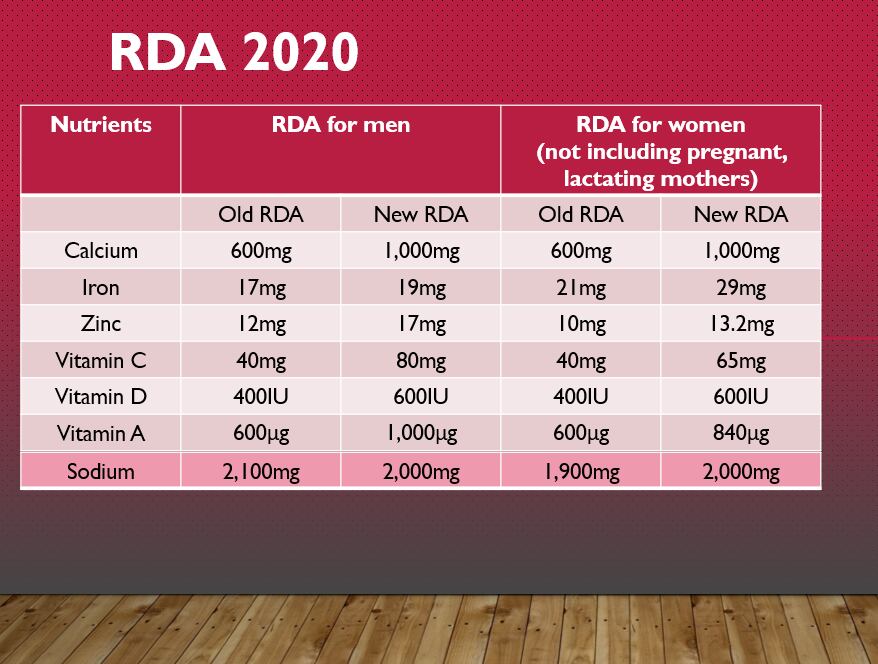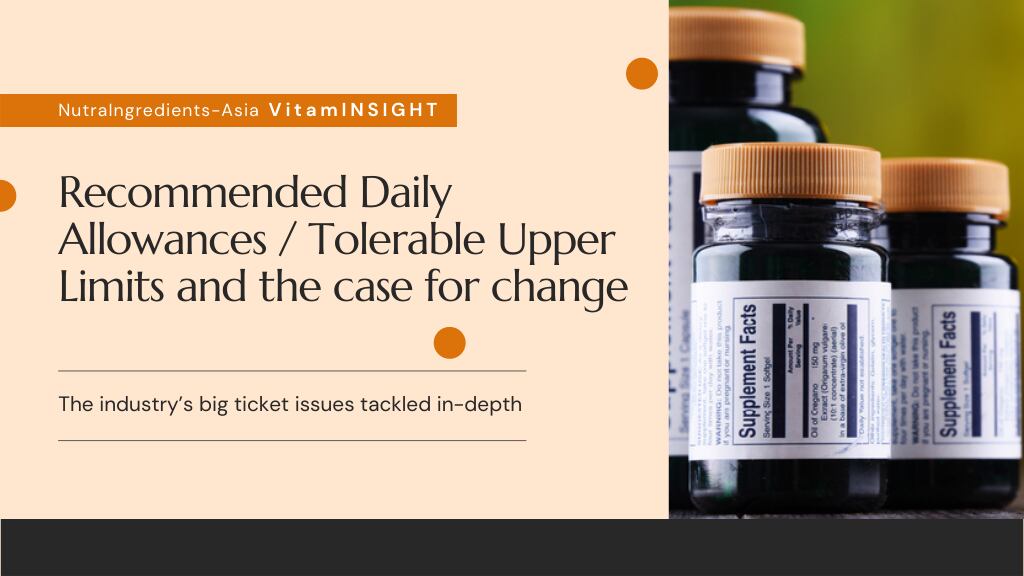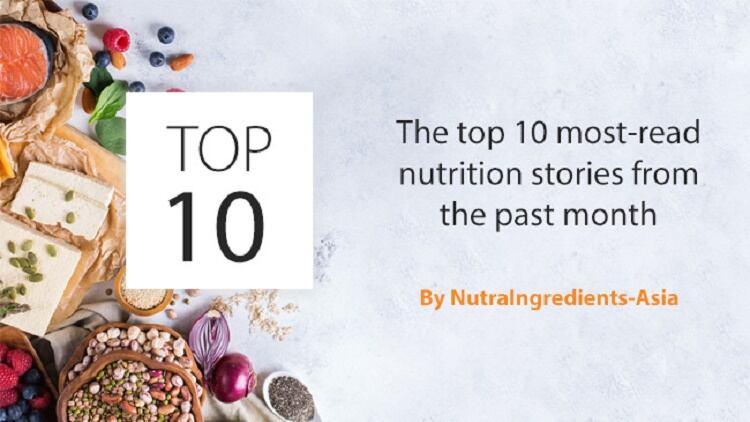The purpose could range from preventing undernutrition to reducing the risk of non-communicable diseases (NCDs).
Businesses, from food to health supplement manufacturers, are also using the above to design new products and services.
However, finding the “right” intake amounts have been a challenging task, and policymakers have been experimenting with different methods to establish the most appropriate values.
Part of the reason is also because excessive intakes of certain nutrients could potentially result in toxicity.
In September, South Korea’s Citizens United for Consumer Sovereignty (CUCS) reported that some health supplements for children contained excessive nutrients which it said was a cause for concern.
The report investigated 24 Health Functional Foods (HFF) for children randomly selected from ecommerce sites such as Coupang, 11st, Auction, and Gmarket.
A finding was that certain products contained excessive nutrients, for some, it was five times of the recommended intake.
“Many health functional foods for children present the nutrient standard setting value as a ‘daily nutritional value’ rather than a 'recommended amount for children',” said the report.
For example, it pointed out the case of a jelly supplement that contains 25μg of vitamin D – which is 250 per cent of the daily nutritional value but 500 per cent of the recommended amount for kids six to eight years old.
At the moment, the daily nutritional value is allowed to be used for labelling nutritional information. However, based on the example above, the CUCS pointed out that this could result in the excessive intake of nutrients.
The CUCS has since urged the Ministry of Food and Drug Safety (MFDS) to look into the matter.
In this series of VitamINSIGHTS, we will therefore dissect the definition and purposes of different tools, their advantages and disadvantages, as well as its implications on the health and nutrition industry through cases studies from India, South Korea, and on the industry side, from DSM and Haleon.
Part I: What’s what
At the moment, most of the health authorities are using Dietary Reference Intakes (DRIs) to calculate the appropriate nutrient intake at the national level.
“Globally, people are now using DRIs. [In the case of India], we have four sets of values that we have produced, generated, and published in the 2020 Nutrients Requirements for Indians,” Dr R Hemalatha, director at Indian Council of Medical Research – National Institute of Nutrition (ICMR-NIN) told NutraIngredients-Asia.
The four sets of values that she was referring to were DRI, RDA, EAR, and TUL.
The following is a table showing the definition of the four terms.
Source: Dietary Reference Intakes: A Risk Assessment Model for Establishing Upper Intake Levels for Nutrients
The EAR is a “factorial” approach in estimating the nutrient requirement in individuals and in a population.
In this case, the bioavailability of a particular nutrient is calculated, and their losses estimated through urine, faeces, and sweat.
“The EAR has particularly two uses. It is used to calculate and establish the requirement of an individual.
“Biology life is always about distribution, about a range, and single values are used only for our convenience. Nevertheless, EAR has been calculated when we want to know an individual’s and the population’s nutrient requirements with some certainty,” Dr. Hemalatha explained.
“Generally, if it is a normal distribution, we will get a nice bell-shaped curve, which gives the average. If we add two standard deviation to the average, it then becomes the RDA.”
However, Dr Hemalatha pointed out that the use of RDA has become obsolete, since it could result in excessive nutrient intake.
“The reason is that the intake level is too high, and this is not required routinely for all individuals.
“If you recommend high level of nutrient intake, it should be taken under supervision because consuming high amounts of nutrients for long periods may pose a risk of toxicity.
For instance, excessive intake of fat-soluble vitamins such as vitamins A, D, E, and K could cause side effects such as hormonal abnormalities.
Excessive intake of calcium may also lead to urolithiasis, while too much magnesium could lead to diarrhoea, while too much zinc got lead to digestive disorders and nervous system damage.
Dr Hemalatha recommended that the EAR would the more appropriate guidance value.
“The use of RDA without periodic supervision will result in an excess intake and harm, and so, the EAR is a correct guidance value to provide for public use and individual use, whether in public health or in manufacturing of food products, because it is safe level.”
Lastly, TUL is not commonly used as a guidance by the food business, but it gives an idea on the maximum amount of nutrients that could be taken that is unlikely to cause adverse effects.
“This value is very important, because even nutrients can be toxic, and so, high level of nutrients taken for a prolonged period can pose risk. That is why TUL is very important especially when we go for nutrient supplementation program and fortification program.
“The TUL is not a guidance for use by the food business, but it gives an idea of up to what level we can put. Because TUL refers to the level which does not pose any toxicity.”
Part II: The relevance for businesses
For the industry, companies are referring to nutrient value guidance to formulate new products and services.
In the case of DSM, the firm recently launched NutriView – a proprietary online database aimed at helping finished product brands and manufacturers create products that target specific populations needs.
The database contains information on the national reference nutrient intake levels and actual intake from the population based on national nutrition surveys, population studies published on peer-reviewed scientific journals, and food balance sheet.
For example, through the database, health supplement firms can identify the micronutrients which are lacking in a particular population and design products to address the issue.
“The database highlights the more problematic nutrients for specific populations. For example, South Korea has an unexpectedly low vitamin C level.”
“We don’t necessarily need everything of anything. This method is less costly and allows companies to provide semi-customised micronutrient solutions,” Dr Taichi Inui, Head of Science Translation and Advocacy – APAC at DSM said.
Information is available for 11 markets across APAC.
Last year, with the introduction of the new RDA levels for vitamins and minerals in India, businesses are now able to offer health supplements containing a higher dosage amount of certain vitamins and minerals.
The Food Safety and Standards Authority of India (FSSAI) last year published new rules on the RDA of vitamins and minerals for men and women, with changes in the RDA of calcium, iron, zinc, vitamin A, C, and D.

This means that companies could increase the dosage of these vitamins and minerals in health supplements up to the RDA limits.
An industry expert said that the move has been well-received by the industry.
“This will open up a big opportunity for the big international brands which are still not officially present in India’s nutraceutical market.
“This is something which is going to give a push to a number of big brands into India and also major Indian brands who would like to get an opportunity to revise their product RDA to cater to a larger population,” Sandeep Gupta, founder and CEO at Expert Nutraceutical Advocacy Council (ENAC) said earlier.
For example, Haleon – formerly known as GSK Consumer Health – has debuted its Centrum multivitamins designed based on the new RDA values in India in September.
Its product, Centrum Men, for instance, contains 80mg of vitamin C and 600 IU of vitamin D2 – which are 100 per cent of the RDA for men.
Prior to the revision of the RDA in India, the RDA of vitamin C and D was lower at 40mg and 400 IU respectively.
As for other micronutrients, the amount of calcium, iron, and zinc contained in the product was also calculated based on the revised RDA.
For instance, the product contains 250mg of calcium – which is 25 per cent of the revised RDA (1,000mg). The old RDA for calcium was 600mg.
Haleon launched a total of four Centrum products in India. Aside from Centrum Men, it also launched Centrum Women, Centrum Adults 50+, and Centrum kids.
Part III: What matters in public education
When communicating to the public on the optimum nutrient intake level, it would be easier for the public to understand what types of foods of consume, instead of getting them to calculate their daily nutrient intake value, said Dr Hemalatha.
The Indian government is currently working on a book on it.
“These values are nutrient requirements used by the government, policymakers and the industry. Nutrient recommendations cannot be understood by the common men.
“In this book, we will be detailing how much foods people from different age groups and genders should be eating for health and wellbeing. This is called the Dietary Guidelines for Indians. This is a food-based approach, not nutrient-based."
Watch the video below to find out more about the project.
On the policymaking front, the Indian government generally uses the EAR values to design nutrient supplementation programs – such as the Integrated Child Development Services where the government serves hot cooked meals or take-home rations for young kids and pregnant women.
“Most of the government nutrition supplementation programs use the EAR to calculate the food requirement.
“Based on that, we will know how much protein and calories are required and come up with the planning of the meals,” said Dr Hemalatha.
In the case of fortification programs, policymakers will need to first assess the adequacy of nutrient intake in the population.
“First, you assess the adequacy of intake of that population and analyse the gap between the amount the population is taking and the EAR, and the percentage of population failing to meet the EAR is used as an indicator.
“For example, if could be that 10 per cent or 20 per cent of the population that are not meeting the EAR and you define a fortification program to fill that gap.
“The goal is to achieve 95 per cent of each life stage to consume the EAR of the nutrients.,” said Dr Hemalatha.
Part IV: The challenges
Aside from India, another country which has revised its nutrient value intake is South Korea. In 2020, the revised Korean DRIs were published for 40 nutrients, however, researchers pointed out that there were limitations in how the values were derived.
They 40 nutrients with revised DRIs range from carbohydrates, protein, amino acids, vitamins to minerals.
Some of the change include setting the upper intake limit was set for vitamins E, C, niacin, vitamin B, folic acid, calcium, phosphorus, magnesium, iron, zinc, copper, fluorine, manganese, iodine, selenium, and molybdenum.
In calculating the DRI for magnesium, zinc, and copper, a group of researchers pointed out that it was difficult to precisely evaluate the intake amounts due to the lack of databases on the contents of these minerals in foods or Korean diets and supplements.
The researchers therefore advised that more human studies are needed for more accurate estimation of EAR and in turn, the DRI.
In addition, more comprehensive and reliable databases on magnesium, copper, and zinc contents in foods are needed to estimate their intakes.
“Without assessment data of real intakes from foods and supplements for these minerals, it is difficult to establish an accurate EAR,” the researchers argued.
With the increased consumption of health supplements, they also suggested that mineral intakes from both health supplements and foods should be considered for the estimation of TUL, since any potential mineral toxicity needs to be considered in the prevailing scenario.





